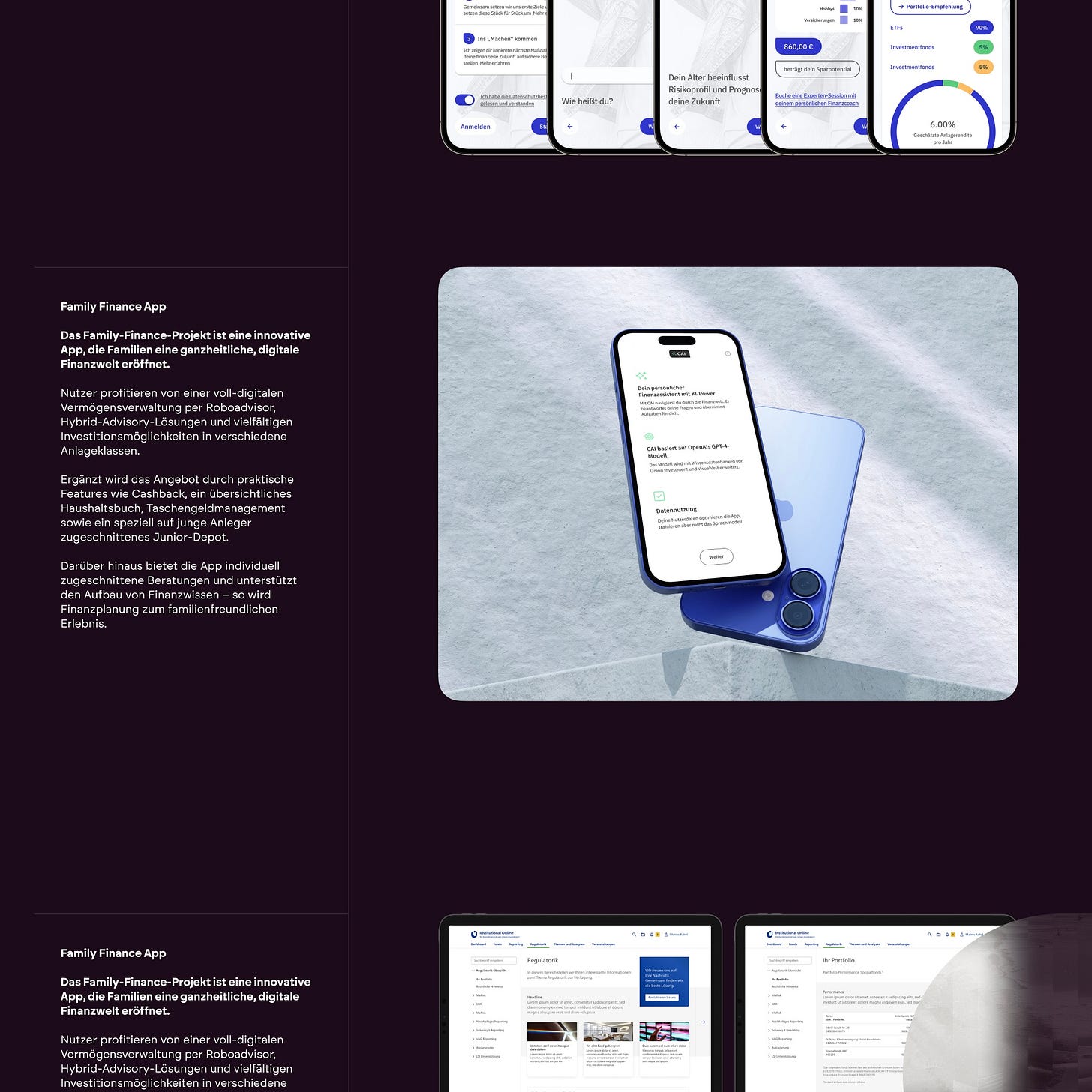Let’s say you work in a bank. You process forms, talk to customers, and juggle numbers all day long. It’s a job that many find straightforward but rarely exciting. But here’s the thing: Money is deeply personal. It shapes our choices, guides our futures, and stirs emotions – both positive and negative. So why do financial services often feel cold, impersonal, and detached from real life?
In our work with German private banks and investment houses, we discovered that what they truly needed wasn’t another bland strategy deck. They needed to understand their customers – who they are, what motivates them, and how to build stronger connections over the long haul. That’s where Experiential Design comes into play. It doesn’t just look at what product to push next quarter. It looks at how people want to interact with money and, by extension, with the bank itself.
From Traditional Consulting to ‘Design Huddles’
Instead of marching in with pre-packaged solutions, we broke from the usual “consultant” mold. We worked side-by-side with employees in sales, IT, customer relations, data – everyone. Think of it as forming a small, intrapreneurial task force: we tested ideas quickly, failed fast, and learned faster. No endless conference calls in suits; instead, a steady stream of insights from people who actually use or deliver the products.
This shift let banks see firsthand what their customers really value. Is it speed and efficiency, or more clarity on risks? Are there hidden emotional triggers that put them off investing?
Design Fatigue vs. Inclusive Collaboration
Arturo Escobar, in Designs for the Pluriverse, points out how we’re moving away from expert-dominated processes toward something participatory, open-ended, and socially aware. That’s the key: design isn’t just about making objects or websites look slick. It’s about asking, “What if we co-create with people, rather than hand solutions down or up to them?”
Companies often hit “design fatigue” when they chase bright ideas without a deeper purpose. But when they combine thoughtful research with methods that integrates people who want to solve problems, breakthroughs happen. This is where we poke constantly: involve customers and employees early, let them test the waters, and adapt the offering based on real feedback.
Dialogue-Focused Change: A Step Into and Beyond Numbers
Imagine a regular saver who wants to open a new cashback account. They log into the bank’s app and meet a conversational interface – an avatar named Samy. Instead of drowning them in forms, Samy becomes a guide, walking them through decisions, explaining terms, and filtering out what doesn’t match economical guidelines and ethical principles. It’s not about throwing jargon at them; it’s about respect and understanding. That’s what human-centered really means: bridging the gap between specialized knowledge and personal goals.
For the bank employee, it’s also divulging. They see how a sustainable savings plan can become more than a pitch. It becomes a shared roadmap to someone’s financial future and that builds the trust that numbers alone can’t.
Human-Centric Economics and Curriculum Content
Talking about Human-Centered Design in finance is really about Human-Centric Economics. At its core, it’s a way to listen to people’s fears and aspirations and let those insights shape new products, services, and relationships. When people feel heard, when they feel understood, they’re more likely to stay loyal and focussed in the process and using those services along their financial journey.
Bottom Line
This more engaged, dialogue-driven process ensures that the products and services you encounter aren’t just “good enough.” They’re genuinely aligned with the way you want to spend, and save money along intended personal directions.
Maybe you never thought you’d read about design in the context of your bank account. Maybe you don’t even consider yourself a “design” person. Done right, these methods make handling money more transparent, less stressful, and, frankly, more humane. And that’s a shift worth paying attention to – even if design isn’t your usual jam.






Really interesting!